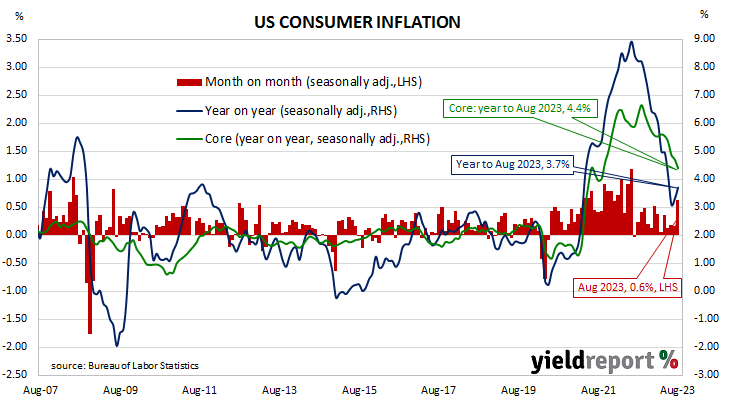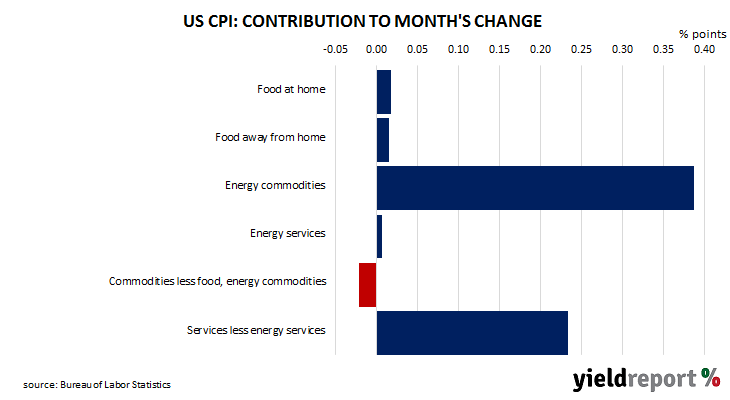Summary: US CPI up 0.6% in August, slightly above expectations; “core” rate up 0.3%; NAB: trend on core CPI looking better at 2.4%; Treasury yields fall; rate-cut expectations unchanged; NAB: likely close to end of hiking cycle; ANZ: Fed will need to be alert to potential for any re-acceleration; energy prices main driver, adds 0.39 ppts.
The annual rate of US inflation as measured by changes in the consumer price index (CPI) halved from nearly 3% in the period from July 2018 to February 2019. It then fluctuated in a range from 1.5% to 2.0% through 2019 before rising above 2.0% in the final months of that year. Substantially lower rates were reported from March 2020 to May 2020 and they remained below 2% until March 2021. Rates have since risen significantly, although they have been declining since mid-2022.
The latest US CPI figures released by the Bureau of Labor Statistics indicated seasonally-adjusted consumer prices increased by 0.6% on average in August. The result was slightly above expectations of a 0.5% rise and considerably more than July’s 0.2% increase. On a 12-month basis, the inflation rate accelerated from 3.3% to 3.7%.
“Headline” inflation is known to be volatile and so references are often made to “core” inflation for analytical purposes. The core prices index, the index which excludes the more variable food and energy components, increased by 0.3% on a seasonally-adjusted basis over the month, greater than the 0.2% rise which had been generally expected. The annual growth rate slowed from 4.7% to 4.4%.
“In 3-month annualised terms the trend on core CPI is looking better at 2.4% and, when mapping to the Fed’s preferred PCE measure, it is likely running at 1.9%,” said Tapas Strickland, NAB Head of Market Economics.
US Treasury bond yields, with the exception of ultra-long yields, fell on the day. By the close of business, the 2-year Treasury yield had shed 5bps to 4.97%, the 10-year yield had lost 3bps to 4.25% while the 30-year yield finished unchanged at 4.35%.
In terms of US Fed policy, expectations of a lower federal funds rate in the first half of 2024 barely moved. At the close of business, contracts implied the effective federal funds rate would average 5.335% in September, slightly above the current spot rate, 5.435% in November and 5.45% in December. September 2024 contracts implied 4.88%, 45bps less than the current rate.
Strickland added there was “[n]othing then to dissuade the Fed that they are likely close to the end of the hiking cycle but [it] will still likely be wary about prematurely declaring inflation has slowed sufficiently given the headfakes in 2021 and 2022 which saw inflation reaccelerate after a couple of soft prints.”
ANZ rates strategist Gregorius Steven added a cautionary note. “However, the data suggest the Fed will need to be alert to the potential for any re-acceleration in inflation through the autumn. Services inflation, ex-shelter (super-core) rose 0.4%.”
The largest influence on headline results is often the change in fuel prices. Prices of “Energy commodities”, the segment which contains vehicle fuels, increased by 10.5% and contributed 0.39 percentage points to the total. Prices of non-energy services, the segment which includes actual and implied rents, also had a large effect on the total, adding 0.23 percentage points after increasing by 0.4% on average.



